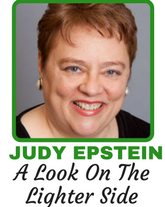As far as I am concerned, there are two kinds of picture-takers in the world: those who take pictures of scenery and those who take them of people. (I don’t count “selfies” as pictures at all; they’re just crystallized ego, and as such more a matter for psychologists to study than for me.)
I started out as a fan of scenery. Wherever I went, I didn’t care what I or anyone else looked like. I wanted pictures to remind me of what I had seen, what I had experienced, where I had been.
My mother, however, was — and still is — profoundly bored by any picture without people in it. “See one hillside of azaleas blooming in the spring, and you’ve seen them all” could be her motto. But she loved my father, and he loved toting us to the same hillside every spring, posing us in front of the flowerscape, and using up a whole roll of film.
When I got my own first camera (a Kodak Instamatic that proved well-nigh indestructible), I went crazy, snapping photos of everything I saw: the mountain that towered over my summer camp; the river that ran nearby; every marble-columned building on the Federal Triangle (illustrating a project on Doric vs. Ionic vs. Corinthian columns); even lying on my stomach in a field to capture how an abandoned barn looked from between tall stalks of grass.
When I was older and traveled abroad, I tried to capture every gargoyle on every cathedral in France; every boxwood hedge in the gardens at Versailles. In England, I tried to photograph the doorways. In Japan, I wanted to capture the somehow foreign look of everything, right down to the oddly delicate thorn bushes growing beside the railroad tracks.
Of course, there were some occasions when I took pictures of family members. For example, on one of our family trips to my grandparents in New York, I managed to snap one of the very few photos in which my grandmother is actually smiling! But … all I have, of her and my grandfather is the two of them from the neck up. The rest of the photo contains the painted seascape that was hanging behind them over their sofa. All of it. Apparently, rather than cut that in half, I chose to cut my own grandparents off at the neck!
You could say that I hadn’t yet grasped what you might call “priorities.” Or maybe what I mean is “perspective.”
Again: on a family trip to Antietam Battlefield in Maryland — site of the single bloodiest day of the Civil War — I posed my family at the base of a very tall column which featured, I think, an angel at the top. I then walked backward down the hill and across two fields, until I could fit all of the monument into the picture. Of course, this meant that my family were reduced to little dots at the foot of the structure. Somehow that didn’t bother me.
Even as an adult, I apparently did so much walking-backward-to-fit-everything-in that when my fiancé and I went camera shopping, for our first big trip together, the fiancé revealed that he’d been given two vital pieces of advice by my previous boyfriend.
“Be sure you buy something with a wide-angle lens,” he had been advised, “or you’ll find yourself walking backward all across Europe.”
“What was the other piece of advice?” I wanted to know.
“Oh, well. That. It’s not important.”
“TELL ME!”
“He just mentioned that if I valued my own skin, I’d better never be without some kind of snack in my pocket…for when you start behaving like you did just now.”
“Oh, so you have a snack in that pocket?” “Not any more,” he said, as I snagged it and finished it in two bites.
Now that I have all the time in the world — and no place to go — I am sitting and studying my old photos from everywhere. And I can see something now that was never apparent before.
I can see that the ones without people in them are…well…boring. Turns out my mother’s been right all along!



